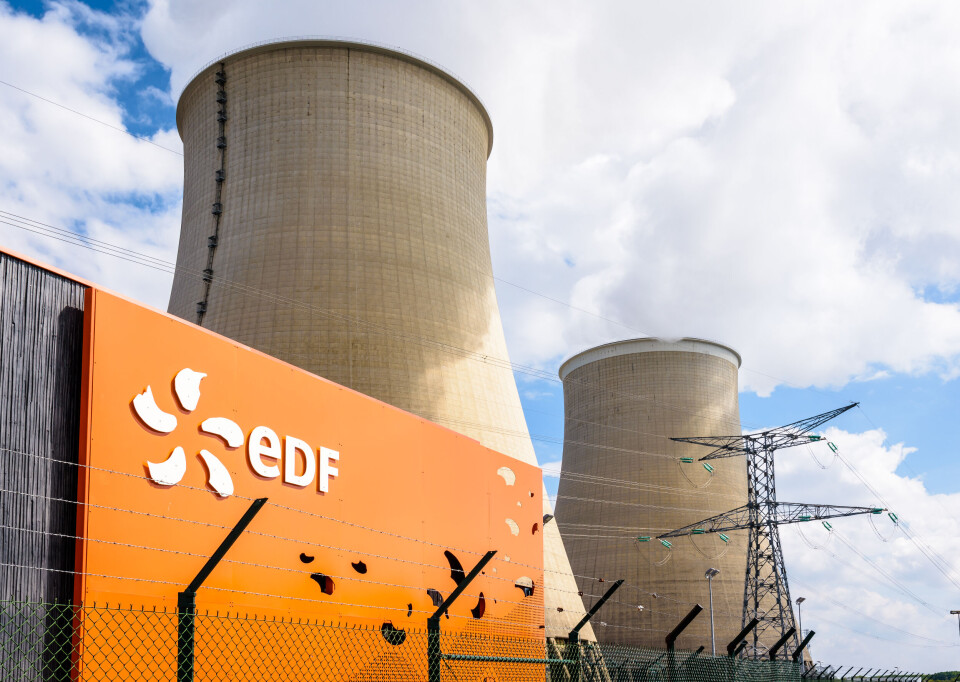-
French energy vouchers: 2025 date confirmed – and it is much later than usual
Five million people are eligible for the physical voucher, which can be up to €277
-
How much are gas prices in France rising in April - and why?
It comes after six consecutive monthly rises. Try these tips to reduce your bills
-
Rules change for dog walking in France from April
Here is how to ensure you and your dog remain within the rules and avoid fines
France inches towards nuclear waste solution as more reactors planned
President Macron’s ‘French Nuclear Renaissance’ aims to provide energy independence and greener electricity for France - but the nuclear waste keeps piling up

Emmanuel Macron has announced plans to launch construction of six new nuclear reactors by 2050, along with studies for a possible eight further ones.
He also wants to prolong the life of existing reactors beyond 50 years in what he is calling the “French Nuclear Renaissance”.
Read more: France to build six nuclear reactors and 50 offshore wind farms
Mr Macron’s vision to “take back control of [France’s] energy and industrial destiny” might be a winner with his electorate, but it clashes with the proposals of most of the left-wing presidential candidates, who want to reduce reliance on nuclear power.
New reactors will add to waste dilemma
Solutions for dealing with the waste already produced by existing power stations, however, are still struggling to get out of the starting blocks – and there is no plan for what would be done with waste from a potential 14 additional ones.
Bruno Sido, a Les Républicains (right-wing) senator and member of Opecst, a committee of MPs and senators which monitors how France manages its scientific and technological choices, said: “France has been reflecting on this question for 30 years.
“It is not done yet but we’re getting there.”
France already has 56 reactors at 18 sites, which supply nearly three-quarters of the country’s electricity.
Read more: 'I am an ecologist and believe in the power of nuclear'
The current goal is to be free of fossil fuels by 2050 in accordance with the European Green Deal, which defines nuclear power as a form of sustainable green energy.
France plans for energy independence
Mr Sido said relaunching the nuclear programme was “exactly the right decision” to take, given the environmental context and issues over energy supply prompted by Russia’s invasion of Ukraine.
Read more: France and Germany prepare for Russian gas cut: what will effects be?
“We must absolutely regain our energy independence,” he said.
At present, however, none of France’s nuclear reactor waste has been dealt with in a long-term way. All waste considered radioactive, almost two million cubic tonnes of it, is stored at surface level, in treatment centres and pools, or shallow repositories.
Some 60% of this comes from reactors and the rest is from medical, research, military and other sources.
The other waste, which includes items such as tools, clothing, mops and medical tubes, is not highly radioactive, according to Mr Sido.
He hopes the rules will be relaxed in future to allow this material to be destroyed, buried or recycled.
More problematic is what to do with France’s intermediate and high-level nuclear waste.
Buried waste could be processed in the future
In 1998, a site near the village of Bure in the Meuse in north east France was chosen as the final storage place for most of it. It will be stored half a kilometre below ground in a vast network of tunnels and galleries known as a Deep Geological Repository (DGR).
The scheme is a retrievable one, meaning that waste can be removed again if future generations find a better way to get rid of it.
It is the brainchild of the French nuclear waste agency Andra.
The facility will be big enough for all the nuclear waste accumulated so far, but on-site studies, administrative procedures and opposition to the programme, including court cases and civil disobedience, have slowed its opening.
Elsewhere in Europe, Finland and Sweden are making progress on their own DGRs, which will be housed in granite.
American geologist Fred Spiegelberg said: “The problem with granite is it almost always has a fracture system that can allow water to move through the rock.
“We stock our waste in the US in shale.”
Deep underground storage could be three years away
The Bure DGR will store the waste in galleries carved out of 160-million-year-old compacted clay rocks. Known by its French acronym, Cigéo, the project currently holds 84% of the 665 hectares required to build the facility.
The prefecture of the Meuse gave it a declaration of public utility (DUP) in December – a formal recognition that a proposed project has public benefits that must be obtained for most large construction and infrastructure projects before work can begin.
Once the Conseil d’Etat gives its consent, the prime minister can sign his own DUP. Andra will then have the power to get the rest of the property it needs.
In the meantime, work has continued with digging of wells and galleries to test reversible techniques of stocking waste for up to 100,000 years.
The prime minister is expected to sign off only after the presidential elections, but the final green light might be three years away as the rigorous and independent Nuclear Security Agency studies the permit request to move and store the spent nuclear fuel and other radioactive matter.
Plans are for existing not future waste
Activity at the Cigéo remains high, nevertheless. This year, a 1,700m² building, called The Eclipse, is being built to house companies working on underground trials.
A 100m-long cavity will also be dug to test technologies and conduct experiments. This is the length each cavity will have to be for intermediate-level waste, which is often solidified into concrete.
The nuclear authority is hoping to start storing this type of waste in 2025.
It is impossible to bury the high-level radioactive waste. This is turned into a glass-like substance, but then requires a cooling period of at least 50 years.
The clay storage facilities cannot handle temperatures above 90C.
Senator Sido said: “It is true that the most recent batches cannot be stocked in their present state. They are too hot and need a cooling-off period of several decades. But the first batches can be stocked now.”
The remaining high-level waste might not arrive before 2060. By then, France will have produced at least as much nuclear waste again. For that, it might have to create a new underground facility.
“As far as I know, there is no project in the pipeline for high-level and long-lived waste which will be produced in the future,” Mr Sido said.
Related articles
Greenpeace France: Tackling climate change is our priority
2022 French Presidential candidates divided over nuclear energy
France looks to small-scale nuclear plants for its future
























